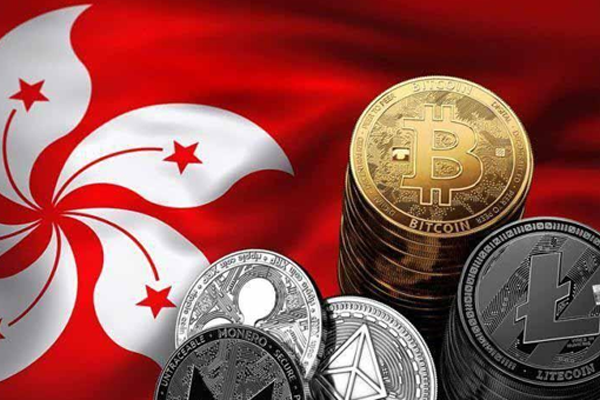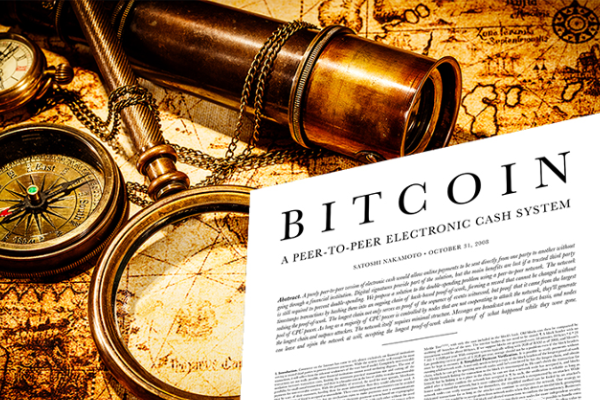Hong Kong releases virtual asset regulation, experts explain the five pillars

An important milestone has appeared in the compliance process of Hong Kong's virtual asset market.
Recently, the Hong Kong Securities and Futures Commission (SFC) released the newly formulated "ASPIRe" roadmap, listing 12 major measures under five pillars to enhance the security, innovation and growth of Hong Kong's virtual asset market. The five pillars of the "ASPIRe" roadmap are access, safeguards, products, infrastructure and relationships.
Interface News reporters interviewed a number of senior industry insiders, who all agreed that the "ASPIRe" roadmap provides a clear blueprint for the development of Hong Kong's virtual asset industry.
Each of the five pillars has its own characteristics
The Hong Kong Securities and Futures Commission pointed out that in 2024, the global virtual asset market will be worth more than US$3 trillion, and it has become a potential force for change in the global financial sector. The annual trading volume of virtual assets exceeds US$70 trillion. Despite macroeconomic turmoil and a fragmented regulatory environment, the recent recovery of virtual assets highlights its resilience. However, growth is also accompanied by complexity: the coexistence of institutional dominance and retail speculation, concentrated but decentralized liquidity, and geographical differences in adoption and regulation pose challenges to global consistency.
Yu Jianing, co-chair of the Blockchain Committee of the China Communications Industry Association and honorary chairman of the Hong Kong Blockchain Association, said in an interview with Jiemian News that the real breakthrough of the "ASPIRe" roadmap lies in its dynamic adaptability. It neither follows the conservative path of legislation before regulation in Europe and the United States, nor replicates the laissez-faire model of some jurisdictions. Instead, it is based on the institutional capital of Hong Kong's existing securities regulatory system and embeds modular regulatory components for the special attributes of virtual assets. This system-integrated innovation may become a paradigm sample for small and medium-sized economies to coordinate the contradiction between financial security and technological change.
Yu Jianing believes that under the Access pillar, by establishing a licensing mechanism for over-the-counter trading and custody services and attracting global platforms and liquidity providers, it is essentially solving the legality and liquidity bottlenecks of the secondary market for virtual assets. The standardization of over-the-counter trading is particularly critical because it has long been outside of regulation and has become a high-incidence area for money laundering and price manipulation.
"This measure can bring the gray area into the regulatory track, and it is also a substantive move by Hong Kong to compete for the entrance of global virtual asset trading flow." He said.
Liu Honglin, founder of Shanghai Mankiw Law Firm, told Jiemian News that the SFC proposed to establish an independent licensing system for OTC trading and custody services under the Access pillar, so that non-VATP (not holding a virtual asset trading license) businesses can operate under a compliance framework. OTC trading is crucial for large transactions, and custodians are the key link to ensure asset security. The new licensing system will fill the market gap and enhance the security and transparency of the Hong Kong market. At the same time, the Hong Kong virtual asset market cannot rely solely on local virtual asset trading platforms. Liquidity providers (LPs) and global virtual asset trading platforms can also bring fresh blood to Hong Kong's virtual asset market.
Yu Jianing said that the three measures of the Safeguards pillar constitute the core framework of risk prevention and control. Dynamically adjusting the custody technology standards and asset reserve ratios avoids the frequent custody failure risks in the virtual asset field. The principle of technical neutrality can adapt to the iteration of future custody models; the insurance and compensation framework directly responds to the market's anxiety about the spread of systemic risks after the FTX incident, and enhances market resilience by transferring tail risks; and clarifying customer access and product classification is actually to build an appropriateness management mechanism equivalent to traditional finance and compress regulatory arbitrage space.
"The combination of these three essentially reshapes the responsibility boundaries of virtual asset market participants."
Liu Honglin pointed out that for Web3 companies, the adjustment of the Safeguards pillar means a reduction in compliance costs, but also puts forward higher technical and risk control requirements. Trading platforms and custodians need to adjust their storage and security strategies according to the new regulatory framework, while project parties planning to enter the Hong Kong market need to more clearly position the regulatory attributes of their products to ensure compliance operations.
Pu Meng, managing director of HashKey Exchange, told Jiemian News reporters that the optimization suggestions for the insurance and guarantee framework mentioned in the "Safeguards" section reflect the regulator's positive response to industry needs. More complete custody and insurance arrangements indicate that the SFC will consider new technological developments, optimize the ratio of cold and hot wallets, improve customer experience, and reduce the operating burden of the platform. It will help companies reduce operating costs, unleash innovation potential, and provide investors with stronger confidence guarantees.
In addition, the pillars of products and infrastructure highlight Hong Kong's consideration of market deepening and infrastructure integration. Allowing professional investors to issue tokens and trade derivatives not only opens up a compliance channel for institutional capital to enter the market, but also prevents retail investors from taking excessive risks; formulating regulatory guidelines for pledge and lending services is a limited relaxation of DeFi's native business model, reflecting the regulator's compromise on market innovation demands.
It is worth noting that margin financing terms that meet securities market standards may introduce leverage control tools from traditional capital markets to prevent the liquidity spiral that is unique to the virtual asset market from spiraling out of control. Yu Jianing believes that at the level of infrastructure optimization, the strengthening of cross-border cooperation mechanisms is not so much a technical fix as a strategic choice for Hong Kong in regional regulatory competition. By establishing a mutual recognition system for virtual asset regulatory standards in the Asia-Pacific region, it consolidates its dual status as an offshore RMB and digital financial node.
Pu Meng told Jiemian News that the Hong Kong Securities and Futures Commission mentioned that it would explore new token listing mechanisms, which means that it will optimize the "tracking record" requirements and consider relaxing the current 12-month limit to further enhance the convenience of listing new tokens. In addition, virtual asset derivatives trading will be an important direction to promote market growth. If the contract function is opened in the future, the market increment is expected to reach 30%-40%, further improving liquidity and prosperity, and providing investors with better hedging tools.
"At present, pledge and lending business has become the mainstream virtual asset investment strategy in the global market, but Hong Kong's supervision of these services is still in a gray area. In the future, it is expected that the SFC will allow regulated trading platforms to provide pledge and lending business, but they may be required to meet specific custody, risk management and information disclosure standards." Liu Honglin said.
Liu Honglin said that this means that the product types in the Hong Kong market will move closer to international standards, but it also requires Web3 companies to invest more resources in compliance and risk control. For project parties planning to provide pledge or lending services in Hong Kong, establishing a secure asset custody mechanism and a transparent profit distribution model may become key elements of compliance.
"Under the Infrastructure pillar, the SFC plans to optimize regulatory reporting mechanisms and introduce data-driven monitoring tools through new technology tools and infrastructure construction to enhance market-wide regulatory capabilities," said Liu Honglin.
It is worth mentioning that in the new roadmap, the Hong Kong Securities Regulatory Commission plans to establish a regulatory framework for Finfluencers (financial bloggers). Liu Honglin believes that in recent years, social media has been flooded with a large number of investment advice on virtual assets, and some KOLs (opinion leaders) have influenced investors' decisions through misleading propaganda, and even a few KOLs have become part of the scam.
"The SFC plans to ensure that investors can better understand virtual asset investments and protect their interests by promoting responsible behavior and accountability of financial influencers. Once this initiative is implemented, for Web3 companies and KOLs, it may mean that the marketing compliance requirements in the Hong Kong market will be stricter, and KOLs and social media propaganda will be subject to higher standards of supervision." Liu Honglin said.
Industry: Compliance costs, market competition and regulatory requirements will be comprehensively upgraded
Yip Chi-heng, executive director of the Intermediary Department of the Hong Kong Securities and Futures Commission, said: "The new roadmap adheres to the core principles of investor protection, sustainable liquidity and flexible supervision, and accurately responds to the challenges of the emerging virtual asset market, thereby leading our ecosystem into the future." He added that the roadmap is not the end, but a vivid blueprint that requires the joint efforts of all parties to promote Hong Kong's vision of becoming a global innovation hub while protecting investors.
Yu Jianing said in an interview with Jiemian News that the "ASPIRe" roadmap for Hong Kong's virtual asset market has an important driving role in the current fintech and virtual asset environment. On the one hand, as one of the global financial centers, the improvement of Hong Kong's policy and regulatory framework is crucial to the sustainable development of the virtual asset market.
On the other hand, Yu Jianing believes that Hong Kong can effectively enhance the liquidity and competitiveness of the market by strengthening its connection with global virtual asset platforms. Especially in the context of increasingly compliant virtual asset supervision around the world, Hong Kong's active leading role has made it an important hub for international capital and digital asset technology.
"These measures lay a solid foundation for Hong Kong's virtual asset market, promote the diversification of virtual asset products and services, and provide an innovative environment for the combination of traditional finance and blockchain technology. At the same time, the Hong Kong Securities and Futures Commission is also constantly improving the compliance of the market, especially through an effective risk management framework and strengthening investor protection measures to enhance market transparency and security, so as to effectively respond to market volatility and potential financial risks."
Yu Jianing said that Hong Kong's efforts in talent training and financial technology infrastructure, especially through strengthening integration with the traditional financial system, have provided solid technical and talent support for the steady development of the virtual asset industry. These measures can effectively enhance Hong Kong's competitiveness in the global financial technology field and ensure that Hong Kong will become a leader in global virtual asset innovation and regulation in the future.
Liu Honglin pointed out that the "ASPIRe" roadmap released by the Hong Kong Securities and Futures Commission this time is undoubtedly an important milestone in the compliance process of Hong Kong's virtual asset market. From the perspective of the five pillars and 12 measures, the SFC is trying to find a balance between risk control and market development. For Web3 companies, the introduction of this series of new regulations not only means that the compliance threshold of the Hong Kong market is clearer, but also means that compliance costs, market competition and regulatory requirements will be comprehensively upgraded.
Yu Jianing believes that Hong Kong's framework embodies a balanced strategy of "embedding traditional financial compliance and adapting to the dynamics of technological innovation." The SFC systematically transplants the mature investor protection mechanism in traditional finance to the field of virtual assets.
For example, the custody requirements for virtual asset exchanges (VATP) directly target the asset isolation standards of traditional financial institutions, while allowing market participants to flexibly meet compliance requirements through technology-neutral solutions. In Yu Jianing's view, this path is in sharp contrast to the fragmented federal regulation in the United States, where the market compliance path is unclear due to disputes over the scope of application of securities laws; while the EU's "Markets in Crypto-Assets Regulation" (MiCA) has established unified standards, but its emphasis on uniformity has sacrificed adaptability to emerging technologies. Hong Kong's flexibility is closer to the needs of institutional investors, especially in providing differentiated adjustment space in the trade-off between custody and risk buffer mechanisms.
In the product and market access framework, Hong Kong adopts a strict hierarchical management logic. For professional investors, the SFC allows them to participate in new token issuance, decentralized finance (DeFi) staking and derivatives trading through regulated platforms, while requiring service providers to establish margin management and information disclosure standards equivalent to traditional finance.
"This tiered opening strategy contrasts with Singapore's restrictive stance, which also allows institutional participation but does not explicitly support complex product innovation; while the Middle East (such as Dubai) actively attracts institutional capital but lacks a matching retail investor protection system," said Yu Jianing.
Yu Jianing told Jiemian News that Hong Kong did not follow the US Securities and Exchange Commission (SEC) to achieve universal regulation of token issuance by expanding the definition of securities, but instead introduced a penetrating product classification mechanism to define the scope of regulation based on the underlying attributes of assets and the essence of the business, thereby avoiding excessive expansion of the boundaries of traditional securities regulations.
In addition, in terms of investor education and market transparency, Hong Kong took the lead in proposing a regulatory framework for financial opinion leaders, requiring their dissemination content to comply with information disclosure regulations and bear responsibility for misleading statements. This type of forward-looking management of new market communication channels has not been fully valued in the mainstream regulatory systems of Europe and the United States.
"By establishing the Virtual Asset Advisory Committee (VACP), the SFC has established a normalized public-private dialogue mechanism, so that the iteration of regulatory rules can promptly reflect the evolution of market technology. This model is superior to Singapore's industry self-discipline-led path in regulatory adaptability." Yu Jianing further pointed out.
The Hong Kong Securities and Futures Commission pointed out that the regulatory roadmap represents a forward-looking commitment to addressing the most pressing challenges of the virtual asset market. To succeed, all stakeholders need empathy, patience and cooperation: regulators must strike a balance between innovation and vigilance, institutions must prioritize long-term stability rather than short-term gains, and retail participants must be cautious in this dynamic market. Progress will depend on pragmatic, step-by-step steps rather than unattainable ideals, as priorities and strategies must continue to evolve as technology and market readiness continue to improve. The roadmap is not the ultimate goal, but a living blueprint.













